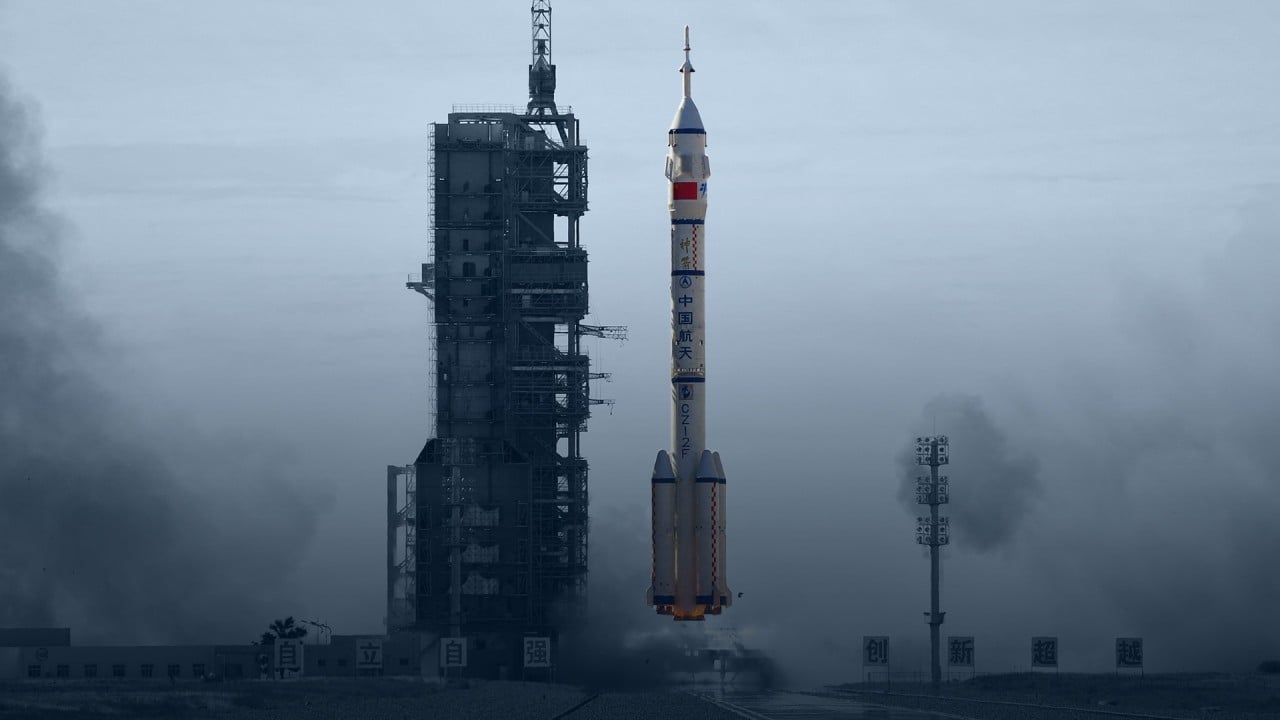
Chinese astronauts want the thinnest nappy in space: researchers
- Astronauts must wear diapers during lift-off, landings, spacewalks and extravehicular activities and their feedback is that they are currently too cumbersome
- New space nappy would be more than a third thinner than the current product and hold more than 1kg of urine, according to paper
“Feedback from astronauts is that the current space nappies are too thick and cause a strong sense of pressure on the underside,” according to a paper published in the Chinese peer-reviewed Manned Spaceflight journal in April.
“As astronauts face increased workloads and much longer working hours, it is critical to research a new product that is more comfortable and easier to wear,” the study said.
Wang Tianhui, co-author of the study with Guangdong Yinyin Co, a company that supplies hygiene products for Chinese astronauts, said on Wednesday that China’s astronauts would wear the thinnest nappies in orbit.
The new space nappy will be more than a third thinner than the current product and could hold more than 1kg (2.2 pounds) of urine.
The thickness of the current nappy is about 26mm (1 inch), but it could be significantly reduced to 7mm, according to their study.
Chinese scientists propose ‘religion-free’ calendar for the space age
“It is thinner, more comfortable and has better absorption capacity,” said Wang, head of the company’s research team. “Globally, it has the best absorption capacity per unit volume.”
Wang said they had recommended this product to China’s space authorities, “but we don’t know when they will use it” because more testing was needed.
His company has supplied space nappies for Chinese astronauts over the past decade.
There is a toilet on the space station, but astronauts must wear nappies during lift-off, landings, spacewalks and extravehicular activities – situations where using the bathroom is not possible.
When the American astronaut Alan Shepard said he needed to urinate after waiting for eight hours because of a launch delay in 1961, he got the order from the mission control, “do it in the suit”.
The problem was not solved until the 1980s when a Chinese-American scientist Tang Xinyuan, who worked for Nasa in Houston, designed a nappy for a spacesuit that could absorb 1,400 millilitres of urine.
It was further transformed into the maximum absorbency garment (MAG) that Nasa astronauts wear today. They are pulled up like shorts, with a capacity of up to 2 litres.
New US space spy agency sees earthly rivalries being played out in orbit
However, the MAG was uncomfortable to wear and was regarded as too big, Wang said.
“Astronauts care more about comfort and the 1kg of absorption capacity is sufficient for aerospace needs,” he said. “Until now, we haven’t received any complaints.”



